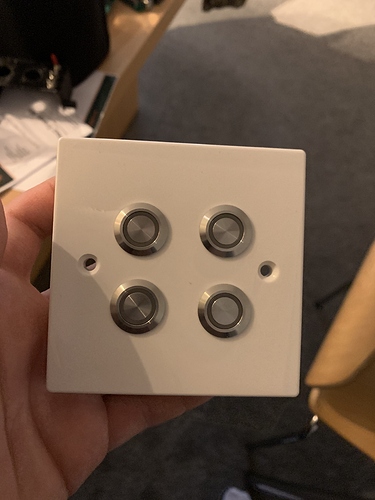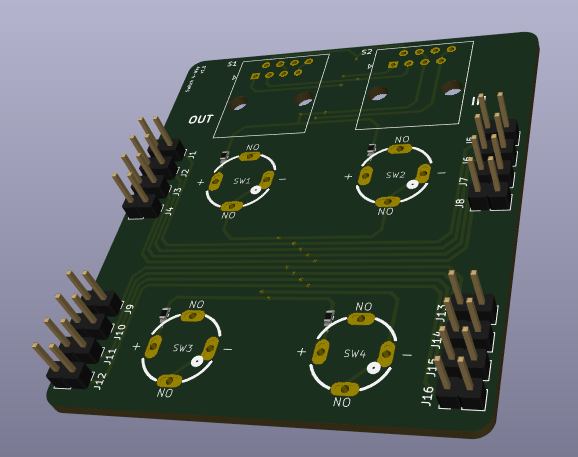Hello all!
Before I jump in, I’ll introduce myself! I’m Josh, but on YouTube I’m Dennistries (that’s my trading name for work!). I’m a 20-year-old university student in the UK. I basically learnt how to use Eagle watching @jon 's Digging through my eagle…’ livestreams, and I now produce education kits, and do a lot of robot building! However since I was 14 I’ve been building home automation stuff, originally out of PICAXE chips and prototyping board, and then I got into Arduino!
I mentioned on the last live stream I made my own light switches based on Jon’s design, and I thought I would share them!
I did the ‘basic’ switch first, however I labelled the RJ45 socket different wanting to have 6 switches.
However, a few years ago Jon teased on his Facebook and YouTube these ESP8266 RGB addressable switches, and about three weeks later I had built my ‘Smart Switch’ and ‘Smart Switch RGB’. As I’m in my university accommodation right now I don’t have the circuits with me but I’ve shown some images below. An idea I had was to have one common back and interchangeable switch boards. However, depending on the layout of the switches, the pin headers to connect the two boards would get in the way, so there are two identical connectors. I also have been prototyping a AC Relay version, however I have been waiting to get some SMD pin headers from aliexpress.
I’ve also been making my own version of Jon’s MCP23017 controller. With my rack mount kit I have one main controller (still being prototyped), basically made of a ATmega32u4 with a Wiznet chip, and all the pins broken out (probably using my DenScript convention – check my website to know what I’m on about). I’m also adding the footprint for a SuperHouse POE module (I mentioned in a live stream about two months ago about making ‘Superhouse Compatible Devices’). Then, for the rest of the front of the rack unit, I have large modules to go in, so I’ve done a POE injector with relays so you can power cycle the devices, and the light switch receive.
I’m going to stick this all up on my website when I go back home at the beginning of December, I hope there is some interest and I value and feedback! Thanks!!!
Josh
www.dennistries.com









